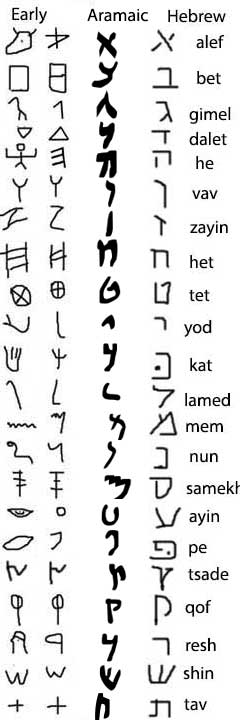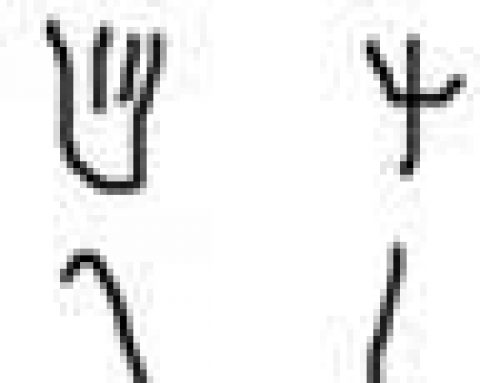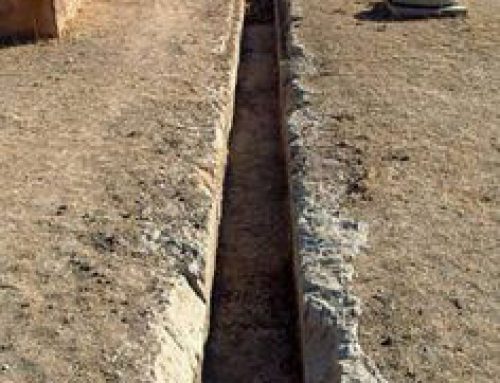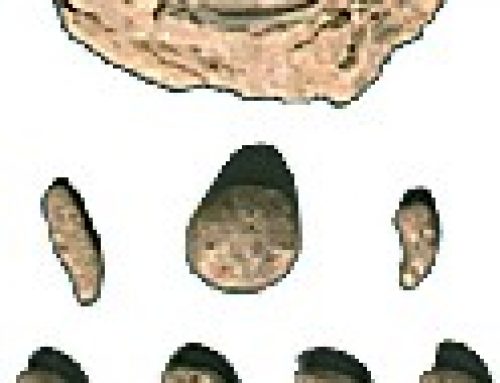
Early alphabets and Hebrew
Some time possibly around 4000 BC, as West Asian people settled down in towns and villages, each group of people began to develop their own special language. This was partly because the people of each region spoke to each other more often than they spoke to strangers, and it was partly a way of telling your friends apart from your enemies.
Some people began to speak early Arabic, others spoke Aramaic, some spoke Hebrew. All of these languages were very closely related, and probably anyone who spoke one of them wouldn’t have had much trouble understanding the others.
The first written Hebrew dates to the 900s BC, and uses the new alphabet letters. Can you see that the letters look just like the ones in the earliest alphabet? Can you find the DFD (highlighted in white) that refers to King David?
Unlike Greek, Hebrew kept on being written from right to left, and kept on using the earliest forms for hundreds of years. In the 500s BC, the Jews in exile in Babylon used that early alphabet to write the Torah, the five first books of the Bible, and other religious books like Psalms and Proverbs.
But under the influence of the Persian Empire in the 400s BC, the Jews changed over to the alphabet that the Persians used to write Aramaic. This was the same alphabet but simplified, so you could write it faster. Around the same time, a different simplification of the Aramaic alphabet – Nabataean – started down the road that became written Arabic.
More about the Jews
More about the alphabet
And more about Arabic
Bibliography and further reading about Hebrew:




